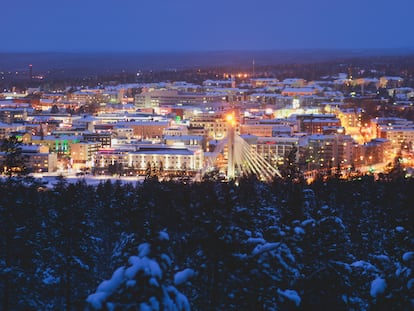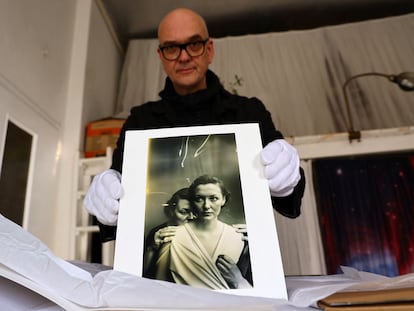Jon Cazenave: When nature creates its own images
In the solitude of Lapland, the Basque photographer has come up with a new series that represents an ode to the natural world and an exploration of procedures that allow it to express itself
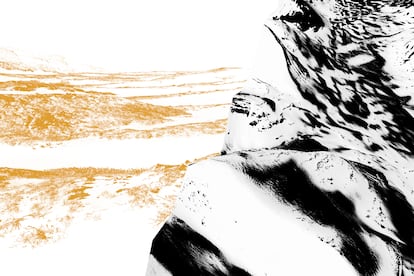
Jon Cazenave, born in 1978 in the Basque city of San Sebastián in northern Spain, says that the first impression he felt upon arriving at the Kilpisjärvi Biological Station was one of anguish: he was overwhelmed by the blocks of ice and snow that make up the wild lands of Lapland. There, standing under Saana, one of the highest peaks in Finland, in a territory that serves as a border for three nations, he spent 16 days in almost complete solitude. It was the time of the year when winter was coming to an end and spring brought with it the thaw and endless hours of light. Invited to participate in Ars Bioarctica, an artistic and scientific research program, the photographer set out to develop new ways of representing the landscape with a clear purpose in mind: not to impose his own gaze but to allow nature to express itself.
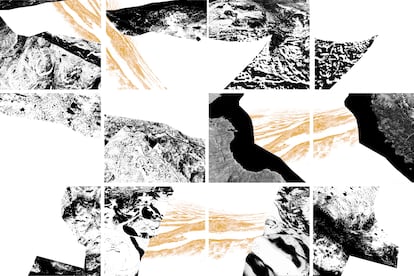

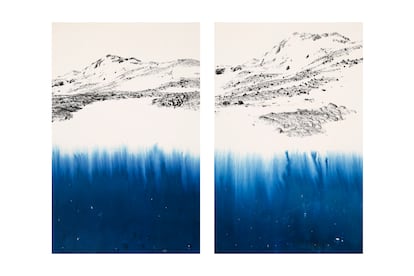
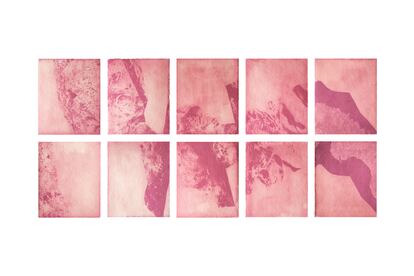
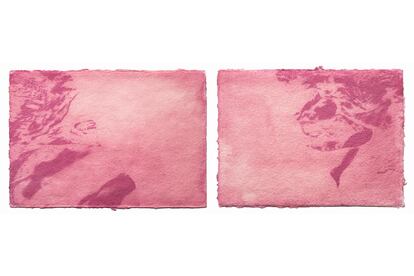
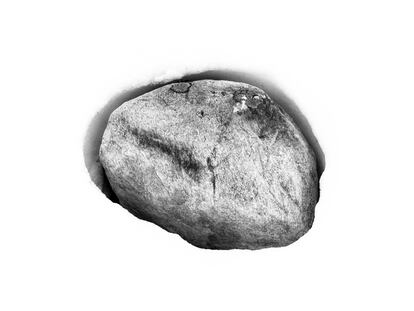
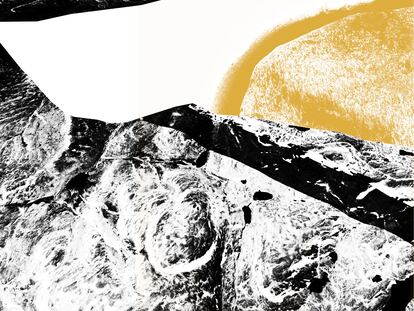
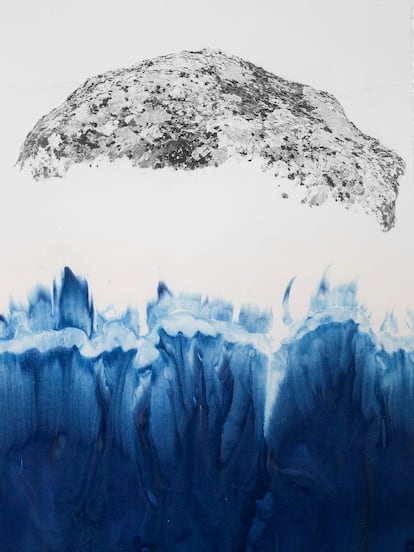
The result of those intense days is a powerful set of organic and abstract images where the force of the natural world comes out on top: Ice, Soil, Light and Silence. The images are being exhibited at the Ibero-American Institute of Finland in Madrid, in a show curated by Sandra Maunac. The exhibition is an ode to the natural and primeval world that this artist once again uses to delve into the idea of the landscape as a constructed reality, and to explore the relationship between culture and nature, while giving rise to new creative approaches that will allow him to explore further beyond the limits of traditional photography, opening paths to new artistic possibilities.
“There are still places where it is necessary to arrive slowly,” says Cazenave during a telephone conversation. Surrounded by silence, the author little by little traveled through that snowy territory. “In the face of that immensity and that romantic concept of the sublime, working becomes a defense mechanism,” he explains. Without being bound by any schedules, he surrendered to the whim of the brilliant light that flooded the landscape, and set out to develop in situ a new series that transcended the black and white that usually characterizes his work, acquiring along the way a more material edge as he made use of vegetable and mineral elements. Cazenave climbed the Saana, the Pikku Malla and crossed Lake Kilpisjärvi, while the thaw continued and the stones, moss and lichens and other plants became visible again, freed from the white mantle that covers the subarctic region.

He then began to make cyanotypes on Japanese paper (Washi) using rocks. It took him a few days to come up with the idea, so obvious in that place, of placing ice on the emulsified support. So, while the ice melted under the sun, nature was creating its own image. Intent on not using the camera as such, “of trying not to look so much,” Cazenave returned to the origins of photography and the use of primitive techniques to find those primitive, instinctive and uncultured images that he was after.
Ephemeral pieces
Anthotype, a photographic process that is based on emulsions made with plant extracts, was another one of the resources he used. Using berries that he found along the way, and which he would later identify as Arctostaphylos uva-ursi, a species close to the common blueberry, he gave shape to works with reddish hues that integrated digital captures obtained from satellite images. These shades are doomed to disappear over time due to the instability of the developed image. They are therefore ephemeral pieces in whose fragility the force of nature still beats, where color does not manifest itself as a tool within the artist’s reach, but as the expression of a material that in a certain way nullifies the photographer’s authorship.

The mountain that he observed daily from his cabin inspired a series of pieces that allude to the border lines that mark that lost territory. Fictional separations drawn by man that also underscore our distance from the natural world, and the need to control and submit to that uncontrollable force. Screen prints composed of superpositions that incorporate digital satellite photographs, and where one can feel the texture of the pigments that come from the territory itself, of elements found by chance that determine new paths and at the same time remind us of our place in the world. “Minimal parts of a set of organisms that are always in motion and to which we should listen much more, and which Jon’s work, through a few simple notes, helps us perceive,” writes the curator.
Ice, Soil, Light and Silence. Jon Cazenave. On view until February 29 at the Ibero-American Institute of Finland in Madrid.
Sign up for our weekly newsletter to get more English-language news coverage from EL PAÍS USA Edition
Tu suscripción se está usando en otro dispositivo
¿Quieres añadir otro usuario a tu suscripción?
Si continúas leyendo en este dispositivo, no se podrá leer en el otro.
FlechaTu suscripción se está usando en otro dispositivo y solo puedes acceder a EL PAÍS desde un dispositivo a la vez.
Si quieres compartir tu cuenta, cambia tu suscripción a la modalidad Premium, así podrás añadir otro usuario. Cada uno accederá con su propia cuenta de email, lo que os permitirá personalizar vuestra experiencia en EL PAÍS.
¿Tienes una suscripción de empresa? Accede aquí para contratar más cuentas.
En el caso de no saber quién está usando tu cuenta, te recomendamos cambiar tu contraseña aquí.
Si decides continuar compartiendo tu cuenta, este mensaje se mostrará en tu dispositivo y en el de la otra persona que está usando tu cuenta de forma indefinida, afectando a tu experiencia de lectura. Puedes consultar aquí los términos y condiciones de la suscripción digital.
More information
Últimas noticias
Welcome to the post-religion era: The idea of Christianity as the absolute truth has become obsolete
‘I thought you would like it’: The risky sexual practice popularized by TV shows and TikTok
The digitalization of tourism: ‘They promise experiences and gave us the worst possible one’
Mexican peso defies uncertainty with forecasts of a new period of stability in 2026
Most viewed
- Sinaloa Cartel war is taking its toll on Los Chapitos
- Reinhard Genzel, Nobel laureate in physics: ‘One-minute videos will never give you the truth’
- Oona Chaplin: ‘I told James Cameron that I was living in a treehouse and starting a permaculture project with a friend’
- Why the price of coffee has skyrocketed: from Brazilian plantations to specialty coffee houses
- Silver prices are going crazy: This is what’s fueling the rally

